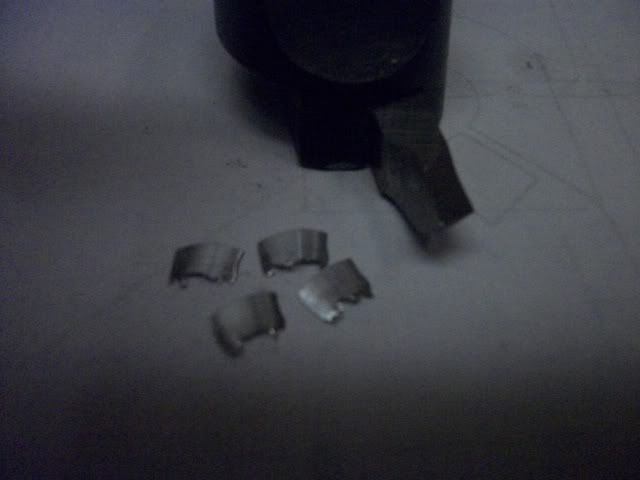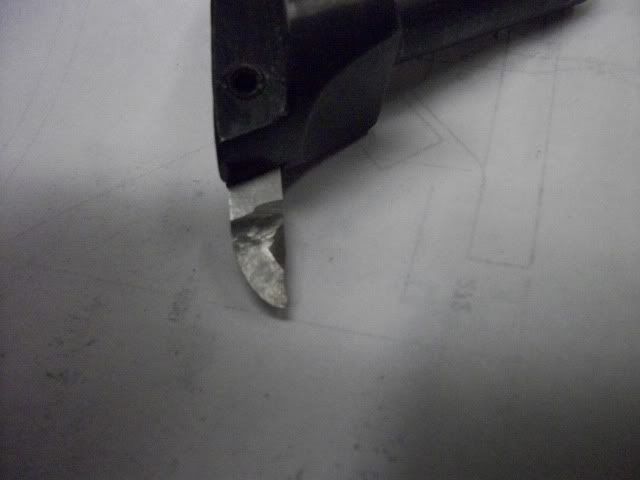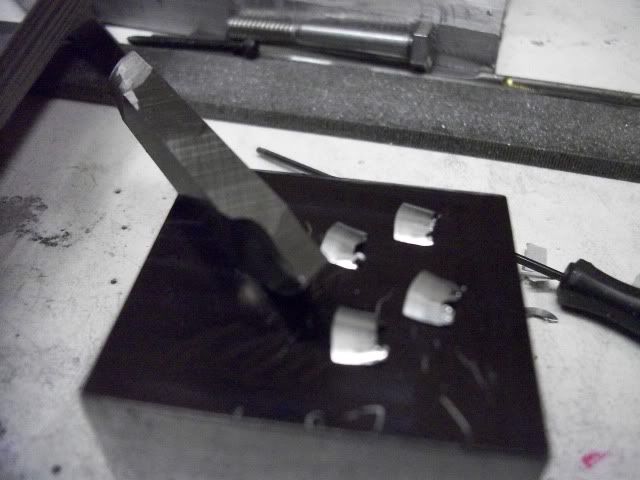A few of you may have read where I have bought a new camera to help me in the shop.
I have been waiting for a ring light to fit around the lens so I can get up close and personal with bits of metal with the macro, and allow me to do vids in slow motion.
So this is my very first outing with hi speed shooting, done hand held, just to see what it turns out like.
I still need to get the focusing sorted, as it is very complicated on that side of things when you have a long zoom lens and you are shooting from rather close, in this case, about 6".
So I will just explain what this horrid vid is about.
I was always fascinated because of the way I grind my flycutters, and really, within reason, even with a large depth of cut, I still get mirror finishes.
So this is my flycutter at about 400 RPM, on a fairly slow feed (under power) and a cut depth of approximately 0.100" (2.5mm).
I took it at two speeds, 448FPS and 1000FPS (frames per second), then it is automatically slowed down to 25FPS. The first minute is at the slower speed.
http://www.youtube.com/watch?v=FipAdIUr5OE&feature=youtu.be
This has shown me that instead of one piece of swarf being generated on each sweep, there are multiple cuts being done across the whole cutting face, all being formed into tightly curled pieces of swarf. So the way I understand it, maybe as though a half a dozen cutters, all acting at different depths, and because the lower one is so fine, it gives the mirror finish that you can see on the metal being cut (aluminium with no lubricant).
Can anyone see anything else?
I promise, it will get better.
John
I have been waiting for a ring light to fit around the lens so I can get up close and personal with bits of metal with the macro, and allow me to do vids in slow motion.
So this is my very first outing with hi speed shooting, done hand held, just to see what it turns out like.
I still need to get the focusing sorted, as it is very complicated on that side of things when you have a long zoom lens and you are shooting from rather close, in this case, about 6".
So I will just explain what this horrid vid is about.
I was always fascinated because of the way I grind my flycutters, and really, within reason, even with a large depth of cut, I still get mirror finishes.
So this is my flycutter at about 400 RPM, on a fairly slow feed (under power) and a cut depth of approximately 0.100" (2.5mm).
I took it at two speeds, 448FPS and 1000FPS (frames per second), then it is automatically slowed down to 25FPS. The first minute is at the slower speed.
http://www.youtube.com/watch?v=FipAdIUr5OE&feature=youtu.be
This has shown me that instead of one piece of swarf being generated on each sweep, there are multiple cuts being done across the whole cutting face, all being formed into tightly curled pieces of swarf. So the way I understand it, maybe as though a half a dozen cutters, all acting at different depths, and because the lower one is so fine, it gives the mirror finish that you can see on the metal being cut (aluminium with no lubricant).
Can anyone see anything else?
I promise, it will get better.
John




























































